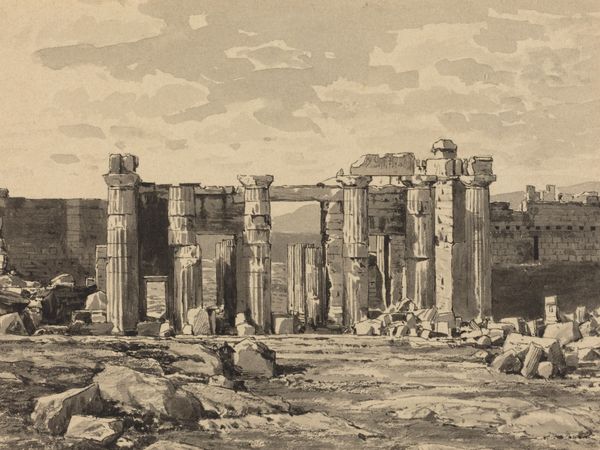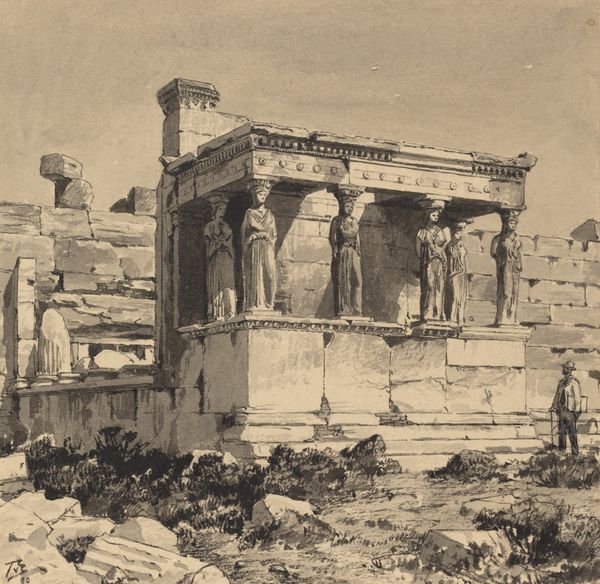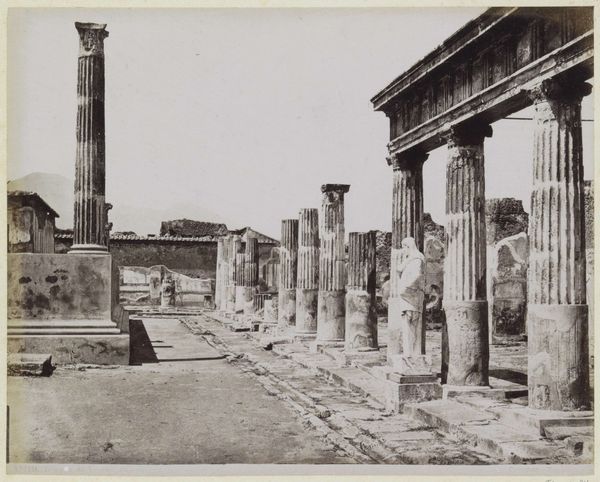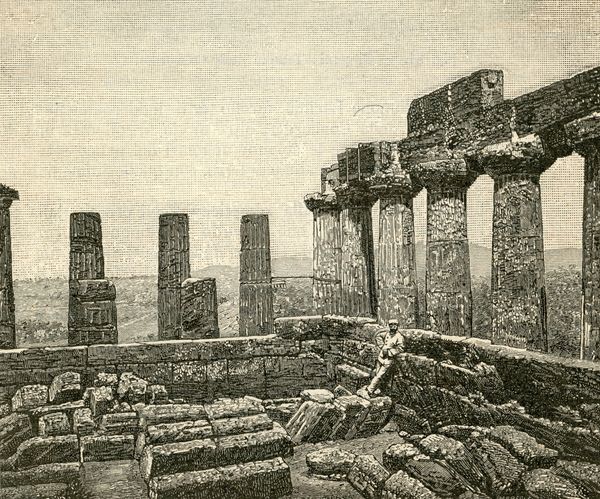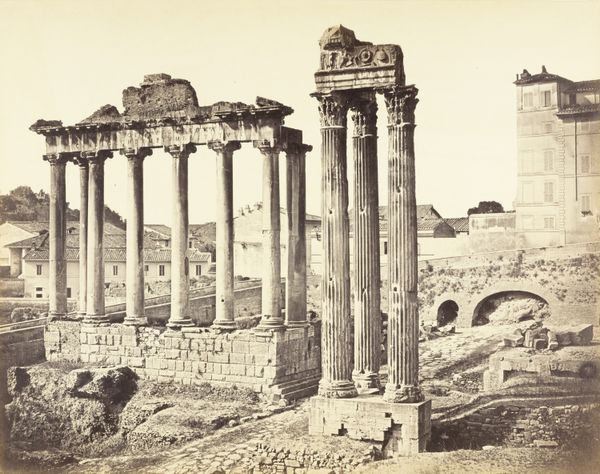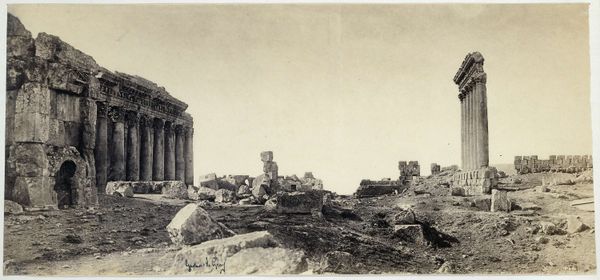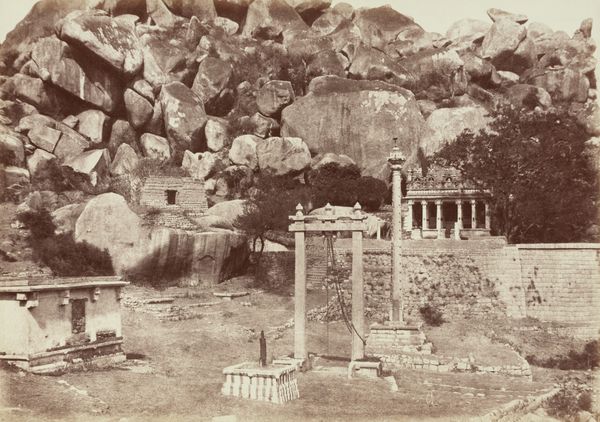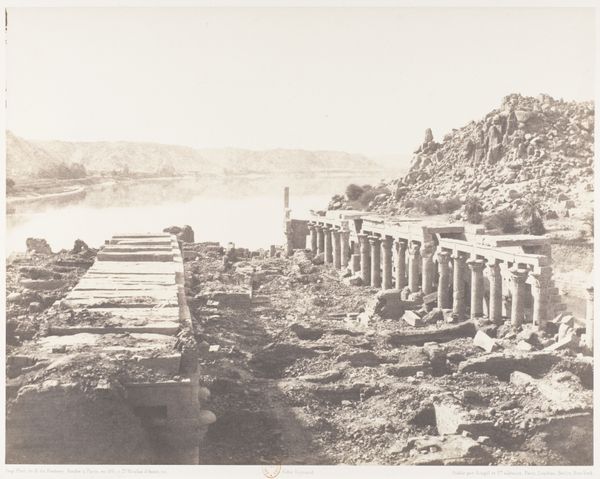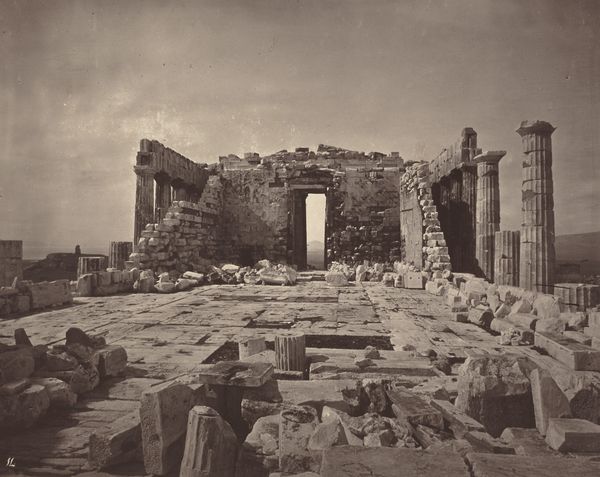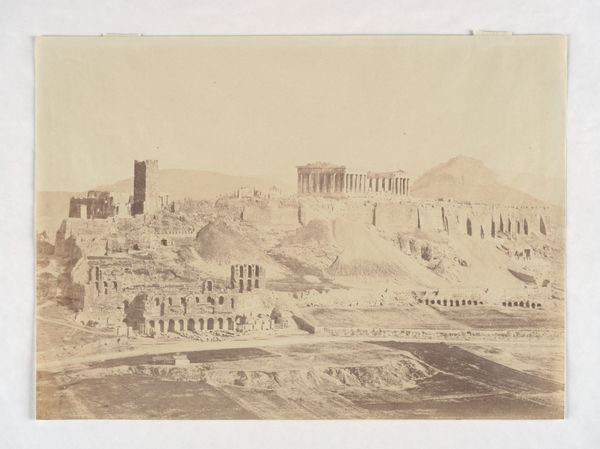
drawing
#
drawing
#
greek-and-roman-art
#
landscape
#
cityscape
Dimensions: image (lunette): 14.4 x 15.6 cm (5 11/16 x 6 1/8 in.) sheet: 17.3 x 16.7 cm (6 13/16 x 6 9/16 in.) support: 48.8 x 33.7 cm (19 3/16 x 13 1/4 in.)
Copyright: National Gallery of Art: CC0 1.0
Curator: Looking at this work by Themistocles von Eckenbrecher from 1890, we see "The Parthenon from the East." The medium is listed as drawing. Editor: Ruins. Immediate sense of, not devastation, but… stately decay? Like an aging queen remembering her prime. The precise linework highlighting all the missing bits makes you feel the absence of time itself. Curator: Precisely. Note how Eckenbrecher uses linear perspective and shading to create depth and emphasize the architectural structure, the skeleton, if you will, against the somewhat blurred, ambiguous backdrop. The composition invites a formal reading, with the Parthenon placed to draw the eye toward a vanishing point just over the mountain. The strategic placement underscores its enduring presence amid what might otherwise be merely… rubble. Editor: Rubble with a purpose! I find the ruins oddly uplifting, like a phoenix getting ready for Act Two. Each crumbled bit has its story, a forgotten prayer, a whispered secret. Imagine sketching this scene a hundred and thirty years ago, trying to lasso something so monumentally un-lassooable. Curator: Indeed. There's a dialogue between detail and scale, particularly within the classical aesthetic – a tension made ever starker with its fragmentation over time. Von Eckenbrecher captured a period of reimagining the ancient world through romantic yet accurate renderings of extant remains, aligning with art movements valuing classical and historical references, right before Modernism’s rise. Editor: It is moving to witness our attempt as human beings to capture our ancestors attempt at divinity; you can feel him struggling in such a profound way in this single drawing. This old piece just really has a heartbeat! Curator: Certainly, an emotional core encased within strict formalism; now as we conclude, the study of Eckenbrecher's depiction provides not only insight into an archeological marvel but into evolving aesthetic sensibilities that viewed and interacted with that marvel through their contemporary moment in history. Editor: And you realize these stones probably carry the echo of laughter of artists across centuries; and this one, Themistocles, simply immortalized what he thought they whispered. I can't hear a word but still can almost hear them chatting in my head!
Comments
No comments
Be the first to comment and join the conversation on the ultimate creative platform.

